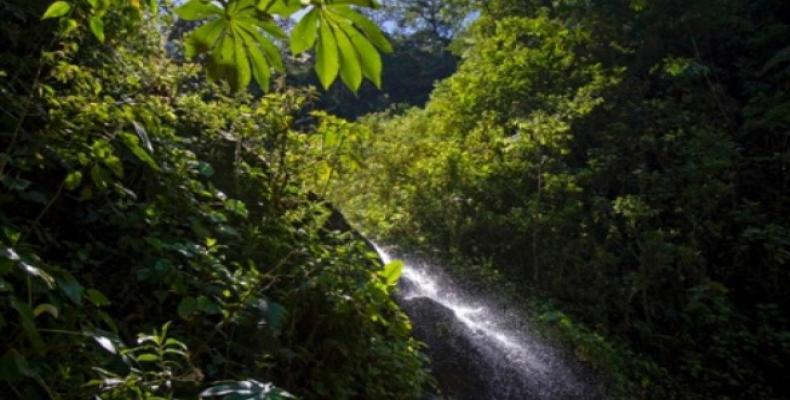Washington, D.C., November 13 (teleSUR-RHC), -- The Amazon rain forest stores about 180 metric tons of carbon and absorbs about 25 percent of carbon dioxide in the air emitted by both humans and natural sources, according to a new high resolution mapping technique that can detect exactly where carbon is being stored in the rain forest.
This new high-resolution mapping strategy has revealed billions of tons of carbon in Peruvian forests that can be preserved as part of an effort to sequester carbon stocks in the fight against climate change.
The new technique was developed by the Carnegie Institute for Science (CIS), Washington D.C., to provide detailed views on exactly how the forest is changing and where the most carbon dense areas are, said media reports on Wednesday. The technology allows environmentalists and governments to develop strategies for landholders to maintain high carbon storage areas or improve on others.
Peru is the country with the second-largest area of the Amazon, covering 60 percent of the country – the report revealed several carbon storage areas under threat. Peru is now one of the most accurately carbon-mapped countries in history, which will allow governments and environmentalists to implement strategies for landowners.
Tropical forests convert more carbon from the atmosphere into biomass than any other terrestrial ecosystem on Earth. However, when land is used for agriculture, as a wood source, or for mining, carbon is often released into the atmosphere where it contributes to climate change.
“We found that nearly a billion metric tons of above-ground carbon stocks in Peru are at imminent risk of emission into the atmosphere due to land uses such as fossil fuel oil exploration, cattle ranching, oil palm plantations and gold mining,” Greg Asner, researcher at CIS, told the Guardian.
But knowing where the carbon is being stored, and where it is being absorbed from the environment, also gives Peru an advantage in negotiating a fair price on the global carbon market – where countries buy and trade emission rights.
“This new map provides the evidence needed to start negotiating in the carbon market on a bigger scale,” said Manuel Pulgar-Vidal, Peru’s environment minister, whose ministry supported the CIS in creating the map.
According to the report, deforestation, agriculture and land-use change account for 61 percent of Peru's carbon emissions.
However, because of new conservation efforts in the country, there may be up to 30 million hectares of potentially new protected forest area, which could absorb and store close to three billion metric tons of carbon.
While the mapping technique has so far only been applied to the Amazon in Peru, it can be used in other parts of the globe to map carbon storage in other forests.
Of all ecosystems on Earth, tropical forests, like the Amazon, are able to convert the largest amount of carbon from the atmosphere into biomass.


